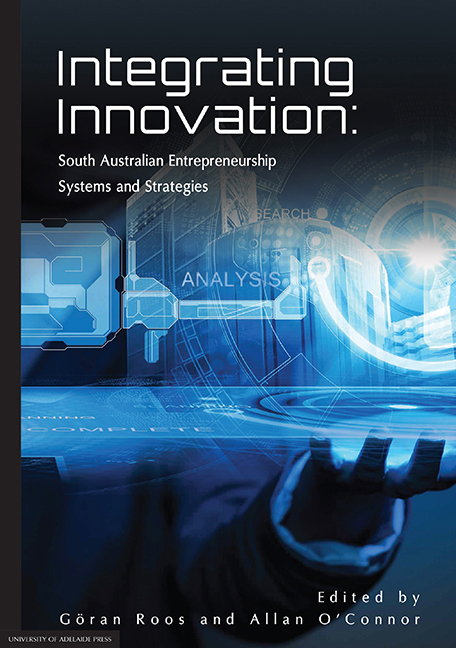Book contents
- Frontmatter
- Contents
- Chapter Abstracts
- Notes on Contributors
- Foreword
- Introduction
- Part 1 Regional-level perspectives
- Part 2 Firm-level perspectives
- Part 3 Innovation management perspectives
- 8 Complex systems adjusting stability levels and providing entrepreneurial opportunities
- 9 Intellectual capital system perspective: A case study of government intervention in digital media industries
- 10 A diagnostic tool for assessing innovation readiness
- 11 Developing a framework for the management of Critical Success Factors in organisational innovation projects: A case of Enterprise Resource Planning systems
- Conclusion
11 - Developing a framework for the management of Critical Success Factors in organisational innovation projects: A case of Enterprise Resource Planning systems
from Part 3 - Innovation management perspectives
Published online by Cambridge University Press: 05 February 2016
- Frontmatter
- Contents
- Chapter Abstracts
- Notes on Contributors
- Foreword
- Introduction
- Part 1 Regional-level perspectives
- Part 2 Firm-level perspectives
- Part 3 Innovation management perspectives
- 8 Complex systems adjusting stability levels and providing entrepreneurial opportunities
- 9 Intellectual capital system perspective: A case study of government intervention in digital media industries
- 10 A diagnostic tool for assessing innovation readiness
- 11 Developing a framework for the management of Critical Success Factors in organisational innovation projects: A case of Enterprise Resource Planning systems
- Conclusion
Summary
Introduction
Small and Medium Enterprises/Businesses [SMEs/SMBs] constitute an estimated 95.9 per cent of the total businesses/enterprises operating in Australia, employing about 42 per cent (4.1 million) of the employed workforce and contributing about 46 per cent of the Gross Domestic Product in 2006 to the Australian economy (ABS, 2013; ABS, 2010). Apparently due to small organisational size, less business complexity and high flexibility of working with large organisations, SMEs have shown resilience despite the volatility of the global business environment (Gunasekaran, Rai, & Griffin, 2011).
SMEs, however, face a number of challenges to survive. These challenges include, but are not limited to, availability of financial and human capital; expertise and diversity of business management; technological infrastructure and competencies in maintaining and managing such infrastructure; capacity to embrace, integrate and capitalise on innovations; competitive threats from ever-increasing numbers of small businesses; dependence on large organisations; and the ability to attract and retain a skilled workforce (Malhotra & Temponi, 2010). SMEs adopt a variety of strategies to deal with these challenges. The commonly cited strategies include implementing the latest available technologies and systems; aligning to the needs of large organisations so as to be an effective partner/member of the value chain; improving the business processes; enhancing the staff skills; and being ready to adapt to the dynamics of market-based economies (Gunasekaran et al., 2011).
The high dependence of SMEs on larger enterprises for their business survival has led to SMEs adopting innovative technologies and systems which facilitate improved business and relationship management and better communication with their supply chain partners (Gunasekaran et al., 2011; Malhotra & Temponi, 2010). Enterprise Resource Planning [ERP] is one such system that has attracted significant acceptance by SMEs since 2000 (Huin, 2004). ERP is used as a means of automating and standardising business operations, improving information visibility and facilitating supply chain integration. The structural changes brought about by the introduction of ERP lead to innovative practices and ways of operating in today's dynamic business environment. However, the organisational innovation process of ERP is considered a complex endeavour and poses significant challenges to organisations of all sizes, particularly to SMEs (Morabito, Pace, & Previtali, 2005).
Information
- Type
- Chapter
- Information
- Integrating InnovationSouth Australian Entrepreneurship Systems and Strategies, pp. 327 - 354Publisher: The University of Adelaide PressPrint publication year: 2015
